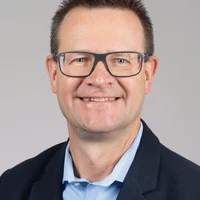Alexander Muroyama, Postdoctoral Researcher at the Electrochemistry Laboratory (LEC) at the Paul Scherrer Institute has successfully applied for the Ambizione Grant 2020 with his project “A novel process for electrochemical direct-air capture of CO2”.
The idea behind
The immense amounts of CO2 currently emitted into the atmosphere are a major contributor to climate change, which is leading to many problems such as rising global temperatures and increased frequency of catastrophic weather events. Alexander Muroyama’s project brings forth an idea to help tackle this problem. More particularly, a novel process for “direct air capture”, whereby CO2 from atmospheric air is directly captured rather than from a point source, such as a coal power plant or a steel manufacturing plant. “Existing air capture processes are rather energy-intensive and have large heat demands”. This is because they require large amounts of energy to thermally regenerate the sorbent, or the material used to capture the CO2. Muroyama’s method suggests to “rather than using heat to regenerate the sorbent, use electrons, which can be done in a less energy-intensive hence more energy-efficient way.” This approach is geared towards a future where a lot of renewable electrons are available. For this, more solar, photovoltaics, and wind energy need to be produced to compensate for the reduction in fossil fuels. Electro-chemistry provides a good tool for storing or utilizing excess renewable energy, for example in batteries or to drive water electrolysis and to store energy in the chemical bonds of hydrogen, the so-called “hydrogen economy”.
One way of reducing CO2 emissions to the atmosphere is to substitute syn-fuels for fossil fuels. Synfuels can be derived from the components of air and water. Whilst electrolysed water can form hydrogen, CO2 from the air serves as a carbon building block. CO2 from air and hydrogen can then be reacted together using catalysts to make liquid hydro-carbons like kerosene for airplanes or other transportation fuels. If fuel made of the captured CO2 from the air is burned, this constitutes a net zero carbon cycle as the CO2 does go back into the air, but there is no net increase in the amount of CO2 produced. This is advantageous compared to fossil fuels, which are taken out of the ground and burned, thereby adding CO2 to the atmosphere.
Research motivation
Alexander Muroyama has previously gained exposure to direct air capture during his first post-doc at ETH. Since arriving at PSI, he worked on an industrial research collaboration with Shell on CO2 capture using electrochemical methods, which allowed him to identify shortcomings in current approaches. This guided him to the proposed methodology for this grant, focusing on direct air capture as a complimentary approach to point-source (conventional fossil fuel burning power plant) capture. Muroyama adds, “We also need to be actively removing CO2 from the atmosphere” in order to combat global warming as there is simply too much CO2 in the atmosphere and our emissions are continuing to rise.
Research impact
“It could provide a pathway for air-to-fuel technology - this could create a closed carbon cycle for industries that are very difficult to decarbonize such as aviation.” Muroyama explains. Aviation fuels are an example of this due to the difficulty of making fully electric commercial planes. Further, his project increases know-how for novel ways that electrochemistry can be applied to solve practical, real world problems.


